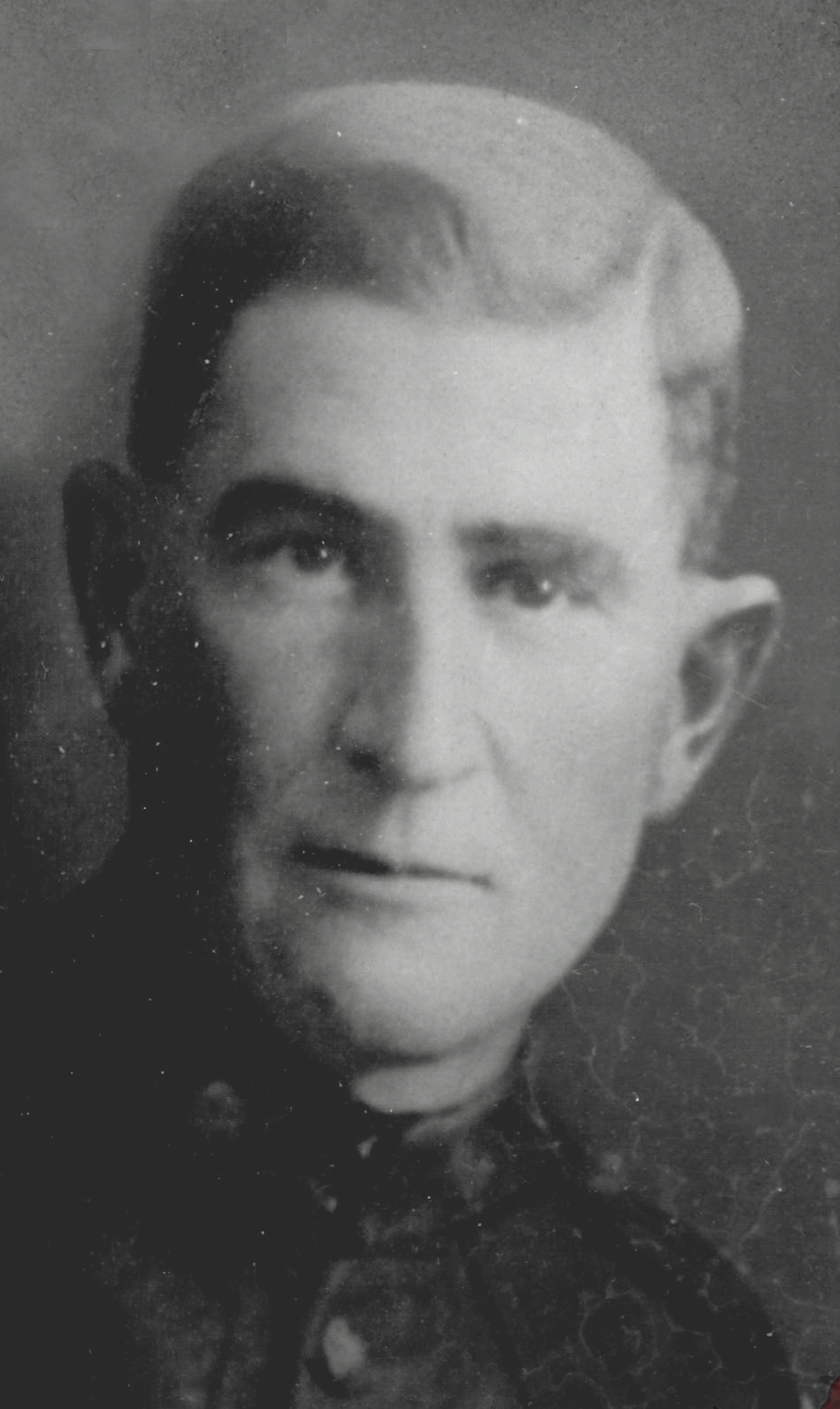Pte
William Curtis Parker
Informationen zu Geburt
|
Geburtsdatum: 15/02/1882 |
|
Geburtsort: Monona, Iowa, Vereinigten Staaten von Amerika |
Allgemeine Informationen
|
Beruf: Landwirt / Bauman / Ökonom |
Informationen zum Armeedienst
|
Land: Canada |
|
Truppe: Canadian Expeditionary Force |
|
Rang: Private |
|
Dienstnummer: 267691 |
|
Einberufung datum: 04/04/1916 |
|
Einberufung ort: Wynyard, Saskatchewan, Canada |
|
Einheiten: — Canadian Infantry, 5th Bn. (Western Cavalry) (Letzte bekannte Einheit) |
Informationen zu Tod
|
Sterbedatum: 10/11/1917 |
|
Sterbeort: Vindictive Cross Roads, Passchendaele, Belgien |
|
Todesursache: Im Kampf gefallen |
|
Alter: 35 |
Begräbnisplatz
|
Tyne Cot Cemetery Grabstelle: XXXIV Reihe: D Grab: 13 |
Punkte von Interesse 3
| #1 | Geburtsort | ||
| #2 | Einberufung ort | ||
| #3 | Ort des Todes (ungefähr) |
Meine Geschichte
William Curtis Parker was born in 1882 in Monana County, Iowa in the United States. In 1908 he married Amis (Annie) Harris in Woodbury County. They had four children. In 1912 the family emigrated to Canada. According to the 1916 Census William was working as a farmer. He lived in Camp Hughes, while his family lived at Big Quill [Lake]. When William enlisted in April 1916 he stated that his home address was in Wynard, Saskatchewan. He joined the 214th (Saskatchewan) Canadian Battalion. This training battalion was stationed in Canada from 1916 up until April 1917, when it embarked for England. While in the 214th, Parker was hospitalised for Tonsillitis.
The battalion was absorbed in the 15th Reserve Canadian Infantry. Four months later, the battalion joined the Canadian Infantry, 5th Battalion (Western Cavalry), part of the 2nd Brigade of the 1st Canadian Division, which participated in the final stages of the Battle of Passchendaele.
On 10 November 1917 the 1st Division advanced with the 2nd Canadian Brigade to the North of Passchendaele. Its final objective was Hill 52. This Hill, half a mile North of the village, was an excellent observation point and would place the allies on top of the Passchendaele Ridge. The 7th and 8th Canadian Battalions were the first to attack. The 5th Battalion was in support at the hamlet of Meetcheele. If Necessary they were to reinforce the 7th and 8th Battalions. Immediately after the attack started a German plane spotted the support positions of the 5th Battalion. Moments later the German artillery started shelling the area, completely obliterating the trenches the Battalion had dug on the previous day. John’s Battalion suffered heavy casualties due to the constant shelling and was forced to move all its companies.
All went well at first and the 7th and 8th Battalions respectively took Vindictive Crossroads and Venture Farm. However the British 1st Division on their left had been pushed back, exposing the left flank of the Canadians. The right flank also came under pressure. Every further advance towards Hill 52 now became neigh to impossible. “A” and ”C” company were subsequently called for by the 8th Canadian Infantry, and took up positions between Venture Farm, Virtue Farm and Vocation Farm, while “B” Company was sent up to Vindictive Crossroads to support the 7th Canadian Infantry. “C” Company was in full view of the Germans on Hill 52, and was subjected to heavy shelling while holding the line at Venture Farm.
William Parker, 35, was killed in action on 10 November 1917. He was buried near Vindictive Crossroads. William left behind his wife Annie and their four children.
The battalion was absorbed in the 15th Reserve Canadian Infantry. Four months later, the battalion joined the Canadian Infantry, 5th Battalion (Western Cavalry), part of the 2nd Brigade of the 1st Canadian Division, which participated in the final stages of the Battle of Passchendaele.
On 10 November 1917 the 1st Division advanced with the 2nd Canadian Brigade to the North of Passchendaele. Its final objective was Hill 52. This Hill, half a mile North of the village, was an excellent observation point and would place the allies on top of the Passchendaele Ridge. The 7th and 8th Canadian Battalions were the first to attack. The 5th Battalion was in support at the hamlet of Meetcheele. If Necessary they were to reinforce the 7th and 8th Battalions. Immediately after the attack started a German plane spotted the support positions of the 5th Battalion. Moments later the German artillery started shelling the area, completely obliterating the trenches the Battalion had dug on the previous day. John’s Battalion suffered heavy casualties due to the constant shelling and was forced to move all its companies.
All went well at first and the 7th and 8th Battalions respectively took Vindictive Crossroads and Venture Farm. However the British 1st Division on their left had been pushed back, exposing the left flank of the Canadians. The right flank also came under pressure. Every further advance towards Hill 52 now became neigh to impossible. “A” and ”C” company were subsequently called for by the 8th Canadian Infantry, and took up positions between Venture Farm, Virtue Farm and Vocation Farm, while “B” Company was sent up to Vindictive Crossroads to support the 7th Canadian Infantry. “C” Company was in full view of the Germans on Hill 52, and was subjected to heavy shelling while holding the line at Venture Farm.
William Parker, 35, was killed in action on 10 November 1917. He was buried near Vindictive Crossroads. William left behind his wife Annie and their four children.
Quellen 5
|
Circumstances of death http://www.bac-lac.gc.ca/eng/discover/mass-digitized-archives/circumstances-death-registers/Pages/item.aspx?PageID=77309 Verwendete Quellen |
|
CWGC https://www.cwgc.org/find-war-dead/casualty/464212/parker,-/ Verwendete Quellen |
|
Service Record http://central.bac-lac.gc.ca/.item/?op=pdf&app=CEF&id=B7595-S031 Verwendete Quellen |
|
The Long Long Trail http://www.longlongtrail.co.uk/army/order-of-battle-of-divisions/1st-canadian-division/ Verwendete Quellen |
|
War Grave Registers http://www.bac-lac.gc.ca/eng/discover/mass-digitized-archives/commonwealth-war-graves-registers/pages/item.aspx?PageId=129798 Verwendete Quellen |
